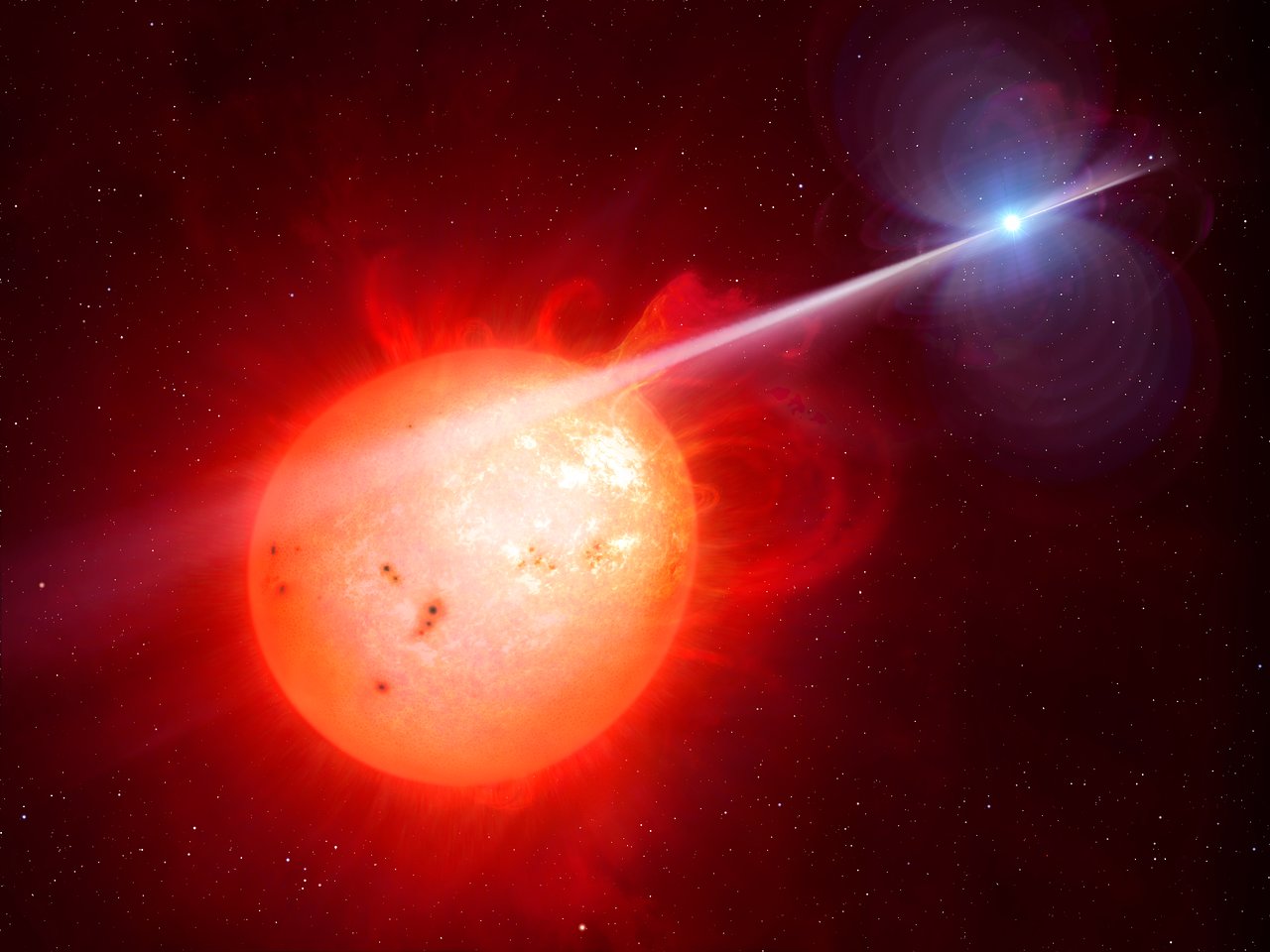Whip It Good! Star's Radiation Beam Sparks Cosmic Light Show

Move over, Devo! A distant star is whipping its companion with radiation, making the whole system pulse like an '80s power-pop dance party.
The whipping culprit is a white dwarf star (the collapsed remains of a star that ran out of fuel) that's energizing nearby electrons and accelerating them up to almost the speed of light, creating a beam of radiation, according to a statement from the European Southern Observatory. As the white dwarf spins like a record, the radiation beam whips around with the star, and slaps the nearby companion, a red dwarf star. This apparently causes the entire system, known as AR Scorpii, to release intense pulses of radiation.
"AR Scorpii was discovered over 40 years ago, but its true nature was not suspected until we started observing it in 2015," said Tom Marsh, an astrophysicist at the University of Warwick and lead researcher on the recent investigation of AR Scorpii, in the statement from ESO. "We realized we were seeing something extraordinary within minutes of starting the observations." [Top 10 Strangest Things in Space]
The two stars are orbiting each other every 3.6 hours "in a cosmic dance as regular as clockwork," according to the statement. The dramatic pulses of radiation are seen every 2 minutes, in a range of energies, from ultraviolet light to radio waves. These temper-tantrum pulses are " unlike anything ... ever encountered," said the ESO statement.
The strange behavior of this double-star system, known as AR Scorpii, was first identified in May by a group of amateur astronomers. Follow-up observation using ESO's Very Large Telescope in Chile, as well as several other observatories, uncovered the mechanism behind the regular radiation pulses.
One aspect that makes the system particularly strange is that it is pulsing in radio frequencies; scientists have never seen this before from a white dwarf system, the statement said.
Weirder still, astronomers aren't sure which of the two stars is providing the electrons that are accelerated by the white dwarf. Right now, scientists can see only the radiation released by the system, which is typical of electrons accelerated in magnetic fields, the statement said. This is very likely the fault of the spinning white dwarf, as these objects are known to have extremely strong magnetic fields.
Breaking space news, the latest updates on rocket launches, skywatching events and more!
"Similar pulsing behavior has been observed before, but from neutron stars — some of the densest celestial objects known in the universe — rather than white dwarfs," according to the statement.
In the 1970s, AR Scorpii was initially misidentified as a single variable star. The new observations change that conclusion. A study detailing the new view of AR Scorpii was published online today (July 27) in the journal Nature.
Follow Elizabeth Howell @howellspace, or Space.com @Spacedotcom. We're also on Facebook and Google+. Original article on Space.com.

Elizabeth Howell (she/her), Ph.D., was a staff writer in the spaceflight channel between 2022 and 2024 specializing in Canadian space news. She was contributing writer for Space.com for 10 years from 2012 to 2024. Elizabeth's reporting includes multiple exclusives with the White House, leading world coverage about a lost-and-found space tomato on the International Space Station, witnessing five human spaceflight launches on two continents, flying parabolic, working inside a spacesuit, and participating in a simulated Mars mission. Her latest book, "Why Am I Taller?" (ECW Press, 2022) is co-written with astronaut Dave Williams.

